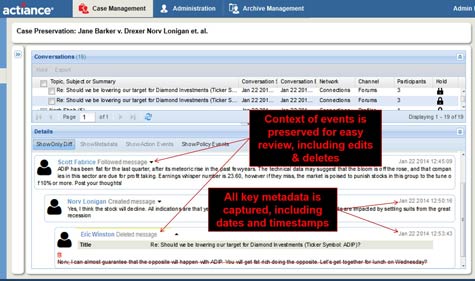Not only is managing compliance requirements a major time-consuming headache; the technology required to manage this process can be expensive to deploy and manage.
With that issue in mind, Actiance this week announced the general availability of Vantage Cloud, an implementation of the company’s archiving and E-discovery software that can now be accessed as a cloud service.
Scott Whitney, vice president of product management for Actiance, says historically, organizations have made use of Actiance technology to monitor communications across internal and external services, including social media network applications such as Microsoft Office 365 and Saleforce.com Chatter, to discover content and information that is being shared outside the scope of a particular set of regulations or internal policy guidelines that normally would be beyond the reach of the internal IT organization.
With so many organizations now preferring to store data in the cloud, Whitney says many IT organizations want to take advantage of the ability to store massive amounts of data at a cost of pennies per gigabyte. As that data moves into the cloud, it makes sense to provide a Vantage Cloud offering in the cloud that can easily be applied to data that is stored both on premise and in the cloud.
In reality, most organizations don’t have much in the way of effectively enforcing compliance policies. Pushing compliance management into the cloud not only is more cost-effective from the perspective of organizations trying to minimize their capital expenses, but it makes the technology as a whole more accessible. That’s significant because in the event of a legal request for data, judges are now much savvier about just how much data a corporation should be able to access and recover. In the future, not having an E-discovery capability might easily be interpreted as a form of willful negligence.
Putting compliance management in the cloud, of course, assumes that the cloud itself doesn’t actually violate any one of a hundred or so compliance regulations that with each passing day seem to be getting more granular across a broad spectrum of vertical industries.
As is often the case with anything to do with compliance, the biggest challenge is finding a way to enforce policies in the least obtrusive way possible. For a lot of organizations, that may mean making use of the cloud to enforce compliance policies in a way that doesn’t require as much hands-on deployment work from the internal IT organization and, in the absence of any system, a lot of time being wasted by the internal IT organization on manually searching files.




